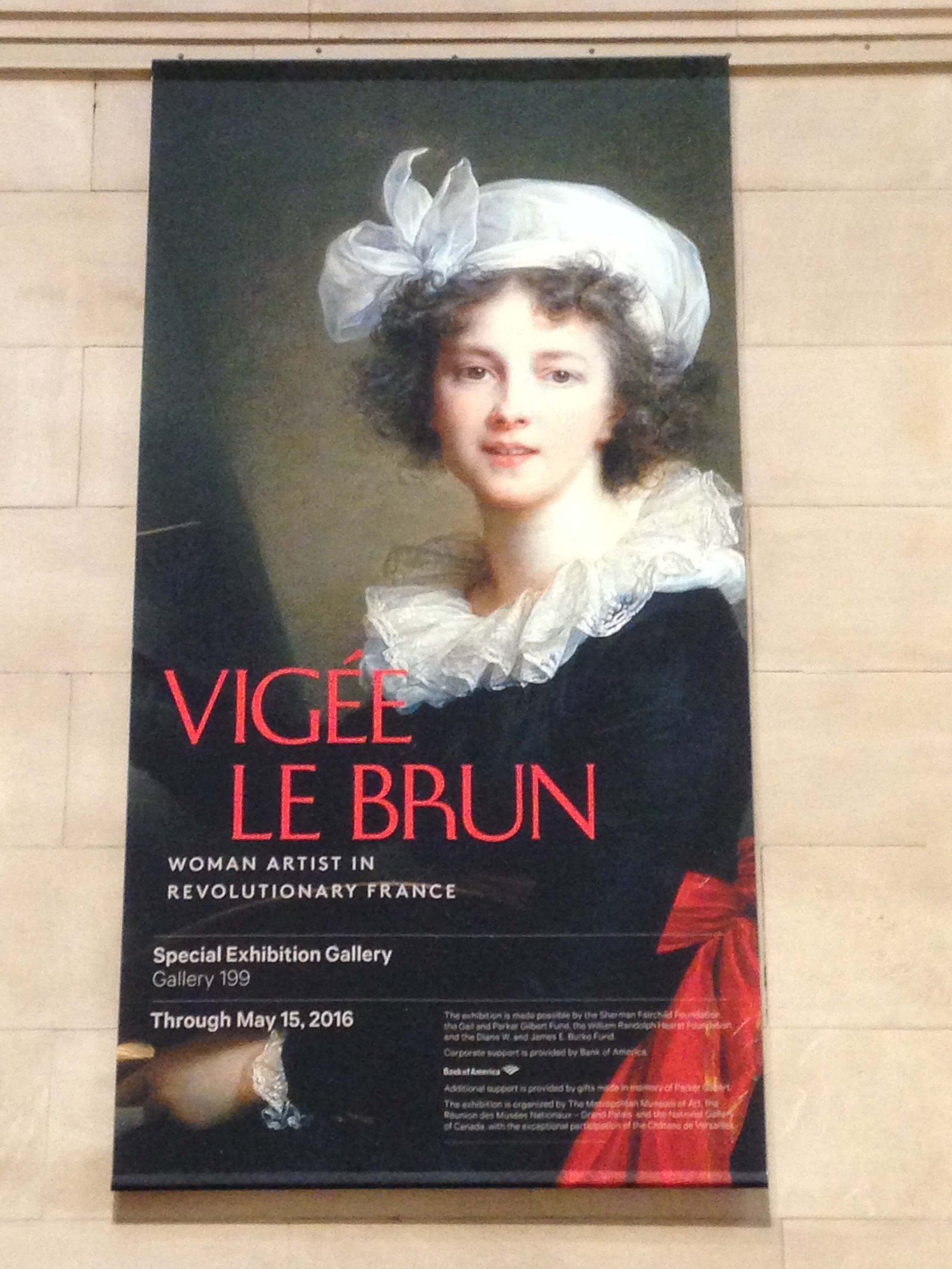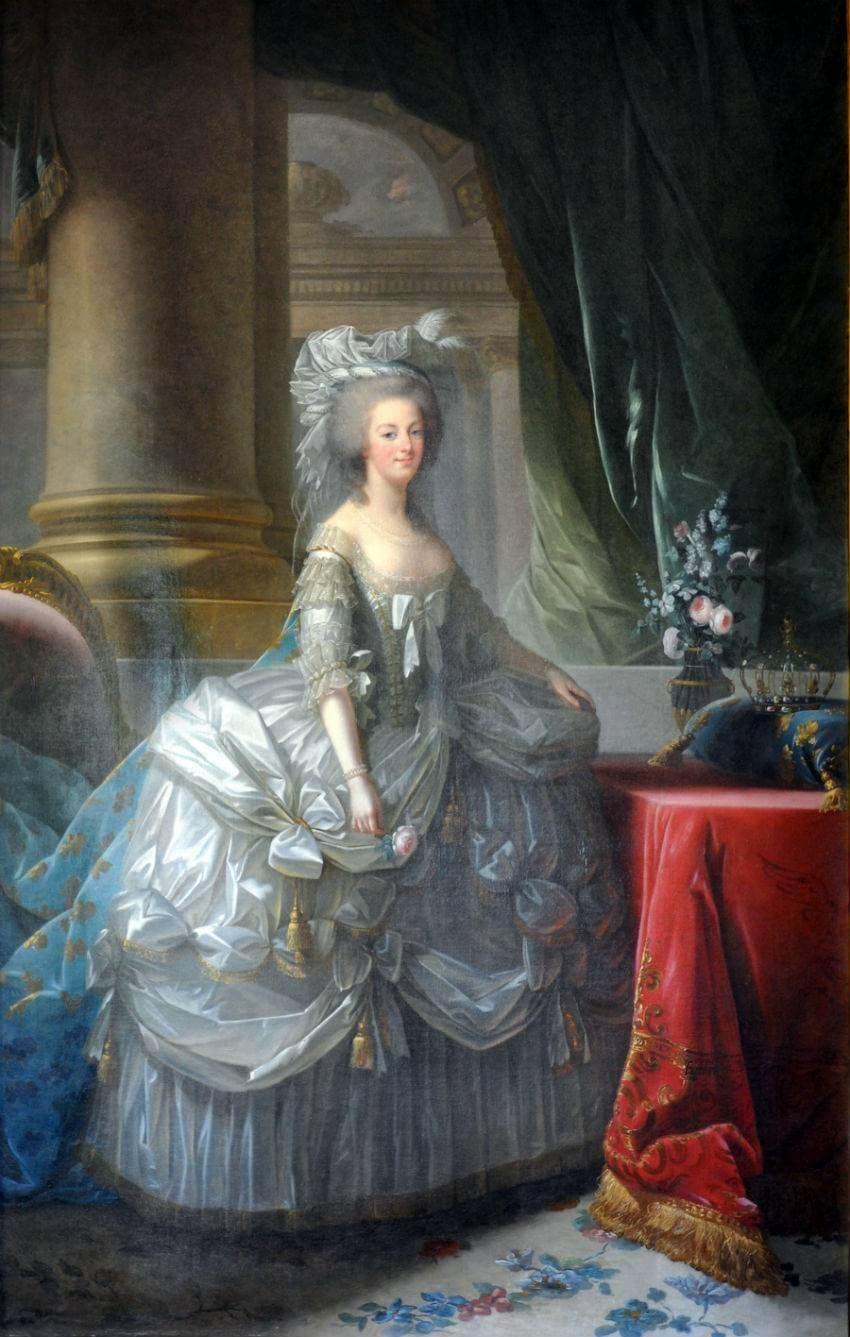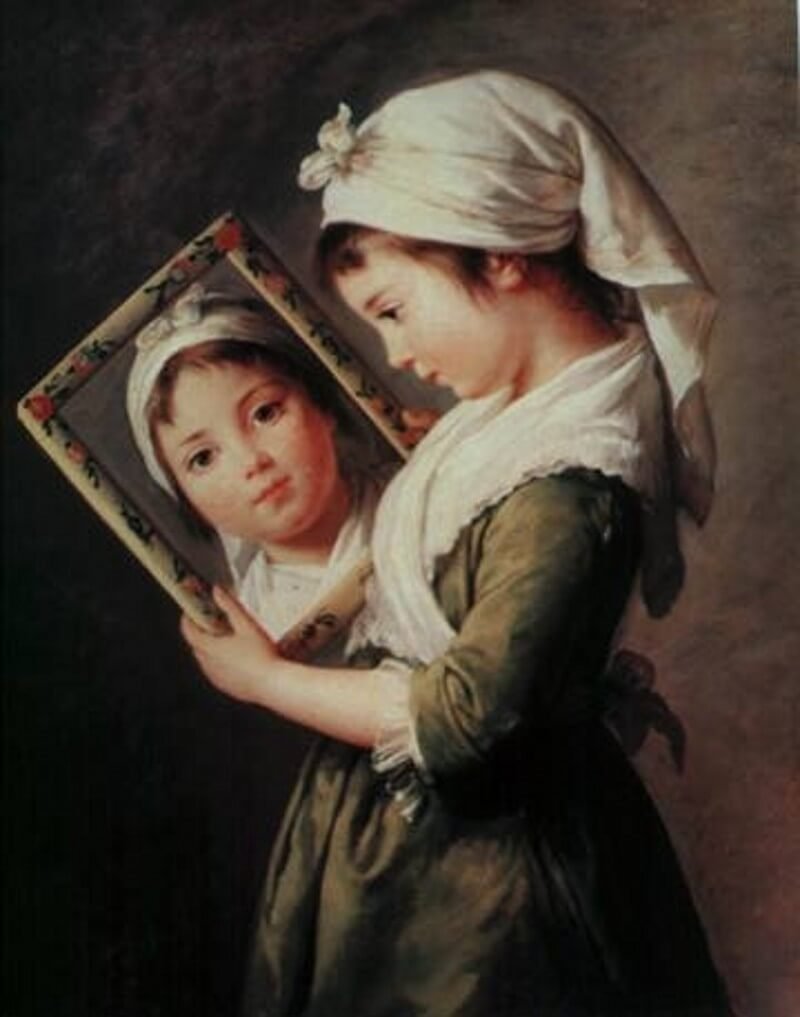
While I was in New York City for the New York Antiquarian Book Fair last week, I took the opportunity to visit the Met to see Vigée Le Brun: Woman Artist in Revolutionary France. This exhibition has been getting tons of press since it opened, but I was very careful not to ready any of it before seeing the show for myself. It makes sense that an significant exhibition dedicated to an eighteenth-century female artist would gather so much attention, but I was pleased to discover that the hype was very much deserved.
There’s no question that Elizabeth Louis Vigée Le Brun (1755-1842) was a pretty extraordinary woman. Not only did she succeed as a well-respected professional artist and academie member in the days where French women weren’t typically allowed formal artistic training, she became a favorite of the French royal court and received multiple portrait commissions from Marie Antoinette. Despite being the recipient of some pretty serious royal patronage, she managed to escape France in the midst of the Revolution, settled elsewhere in Europe, and reached even higher levels of artistic success. No matter where she visited – Italy, Austria, England, or even Russia – she seemed to immediately fall into a crowd of celebrities, nobility, and royalty who were endlessly willing to commission her work.

The Metropolitan’s exhibition includes eighty works by Vigée Le Brun, and it seems like something of a miracle to me that so many of her paintings survived given the turbulent political climate in which she painted them. These paintings are every big as grand, powerful, formal, and detailed as one would expect from any successful eighteenth-century artist, yet they have a sense of personality and individuality unlike anything I’ve ever seen before. It was easy to look at her representations of French noblewomen or Polish kings and think that some of them reminded me of my friends, coworkers, or characters I’ve seen on television. It wasn’t just about their faces; everything about the sitters’ postures and expressions conspired to provide the sense that there were real people behind these portraits.
Judging by the quotations from her journals on the wall texts, Vigée Le Brun was perceptive about her sitters’ characters. Her portraits of men are no less individual than those of women, and she seems to have shared Marie Antoinette’s interest in the theatrical, paining many sitters as literary characters, allegorical figures, or peasants. The works in the Met’s exhibition include portraits of family, friends, nobility, and other notables, along with a few allegorical works, but every subject is treated with the same attention to character, so that it is difficult to tell which is which at first glance. However, some of my favorite works in the exhibition were Vigée Le Brun’s self portraits and paintings of her young daughter.



